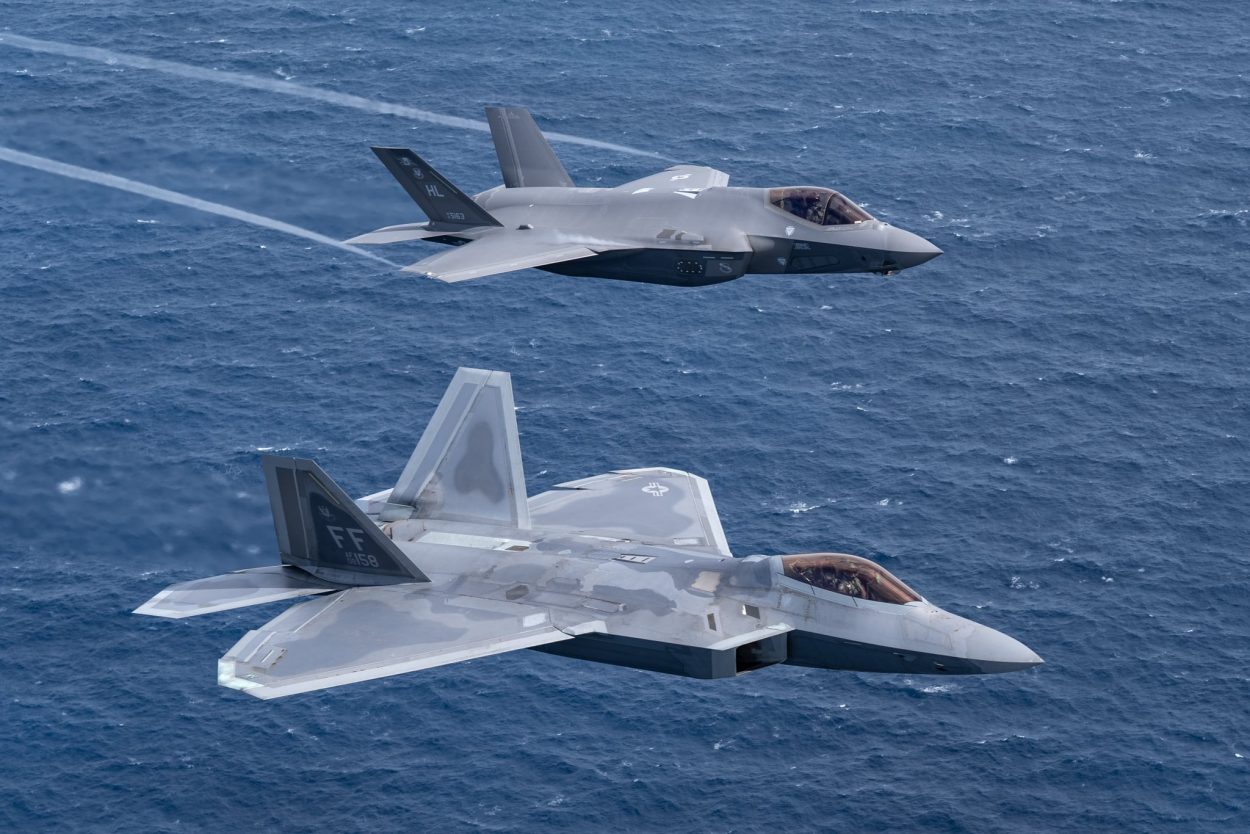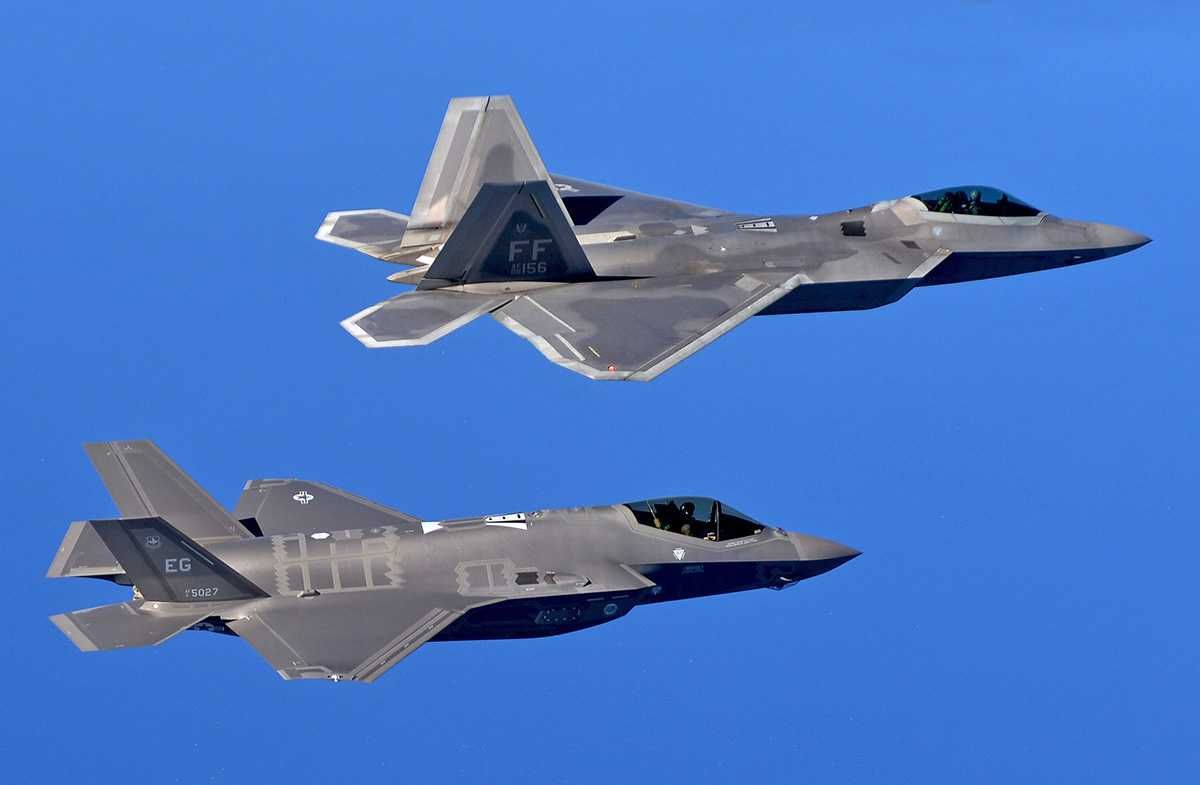The single-seat, twin-engine F-22 Raptor is considered one of the best tactical fighters in the world. However, a lesser-known fact about this jet is that the US was in the process of making a naval variant of the same.
The Raptor was developed at the Aeronautical Systems Center, Wright-Patterson Air Force Base in Ohio. It entered US Air Force (USAF) service in December 2005.
The F-22 was supposed to be an air superiority jet, but its design also allowed it to conduct ground attacks, electronic warfare and signals intelligence missions. The aircraft was slated to replace the USAF’s F-15 warplanes while laying a greater emphasis on stealth, agility, and range.
The Raptor, powered by a pair of Pratt & Whitney F119-PW-100 engines with augmented turbofans, was capable of reaching and sustaining speeds as high as Mach 2.25. It also had the ability to “super-cruise” — maintaining supersonic speeds without using the afterburners.
The F-22 is best known for its super-maneuverability, owing to its “high thrust-to-weight ratio, fly-by-wire flight control system, and its 2D thrust vectoring ability.

However, the service officially terminated the production of these aircraft in April 2009 due to cost overruns. Former US Defense Secretary Robert Gates had announced that the Pentagon would end the Lockheed-run F-22 Raptor program, and would instead focus on increasing the production of the F-35 Joint Strike Fighters.
The Air Force received the last F-22 in 2012. As of May 2020, USAF had 185 of the total 195 Raptors delivered to them.
Why A Naval Variant Was Planned
The F-22 proved to be so capable that Congress pressed the US Navy to consider adopting a sweep-wing version of this new warplane — as a potentially cheaper alternative to developing their own replacement carrier-based fighter — under the NATF (Naval Advanced Tactical Fighter) program which began in 1988.
In return for this, the USAF agreed to consider a modified version of the carrier-based stealth bomber being developed by the Navy under its Advanced Tactical Aircraft (ATA) program as a replacement for their aging F-111 fighter jets.

The agreement would (theoretically) be beneficial and cost-effective as it would allow the Air Force to leverage Nav’s research and development for their new bomber, while the Navy leveraged the Air Force’s for their new fighter.
Cost And Other Factors
In late 1988, a Naval ATF (NATF) program office was set up at Wright-Patterson Air Force Base and the existing ATF Dem/Val contracts were modified to include studies of potential NATF variants.
However, the NATF program, and the associated plans for a naval variant- NATF-22- were soon seen as expensive as the Major Aircraft Review reduced the peak production rates of both the ATF and NATF. This had the effect of substantially increasing the program cost.
In 1990, Adm. Richard Dunleavy, the official responsible for outlining the Navy’s requirements for the new fighter, reportedly said that he didn’t see any way the F-22 could be incorporated into an affordable plan for naval aviation. Consequently, the NATF-22 idea was dropped in early 1991.
This was primarily due to the fact that the Navy realized that a series of upgrades to their existing F-14 jets could meet the Navy’s air superiority needs through 2015.
Some quarters believed that imposing a Naval requirement onto an existing F-22 program would be similar to the mistake that the Department of Development (DOD) made in developing the F-111.
In that program, the department had instructed the Air Force to add Naval requirements to an existing Air Force engineering and manufacturing development concept “with minimal disruption” to the program. Subsequently, the Naval version of the F-111 was substantially heavier and thus canceled in favor of a new start Navy aircraft, the F-14 Tomcat.

Even if the US Navy would have opted to pursue the carrier-capable variant of the F-22, there would have been a lot of technical hurdles to sort out. Aircraft designed for carrier operations need to have the capability to manage a very different set of take-off and landing challenges than land-based aircraft.
The fuselage needed to be more physically robust, with reinforced nose gear and a strengthened fuselage, to be able to withstand the forces applied to it during catapult launches and short-distance landings that are supported by a tailhook present at the back of the aircraft.
The landing gear was to be designed for a 24 ft/s sink rate. The NATF-22 would also have to leverage the same sort of variable-sweep wing approach that is seen on the F-14. The purpose of this would be to provide the aircraft with the ability to fly slowly enough to safely land aboard a carrier.
That concept of variable-sweep wing design itself raised a lot of issues that the engineers would need to solve. The Navy was already handling the high cost of maintaining the sweep wing equipment on the F-14 Tomcat.
A new sweep wing design would probably not help reduce the high operational costs associated with the Tomcat. Even with fixed wings, the F-22 remains one of the most expensive fighter platforms to operate.
In terms of capability too, the Navy’s existing Tomcats turned out to be faster than the fast and maneuverable F-22. Moreover, these planes, in spite of their high maintenance costs, were still much cheaper than building a new stealth fighter for the Navy’s carriers.
- Contact the author at: shreyya.mundhra@gmail.com
- Follow EurAsian Times on Google News




